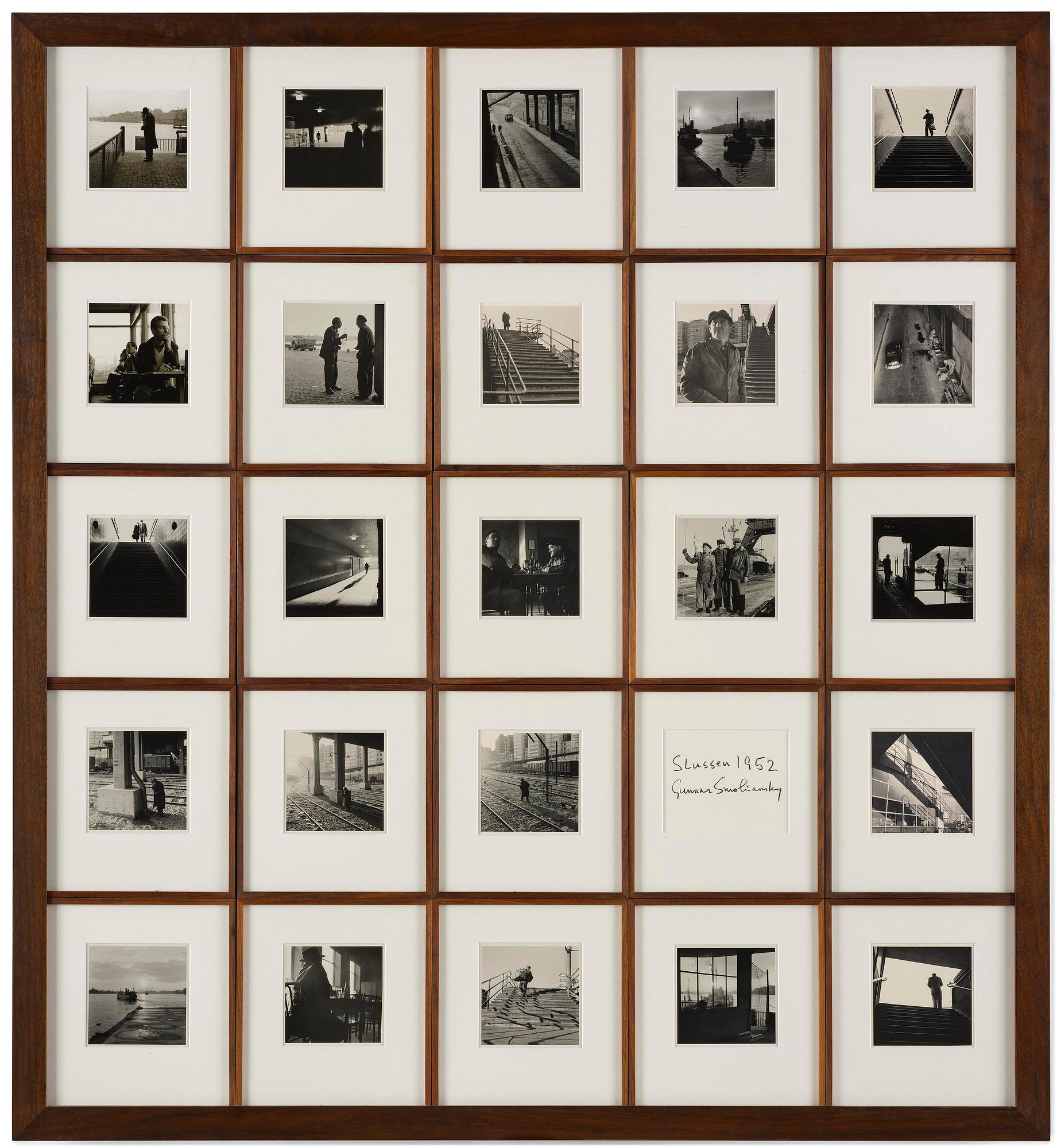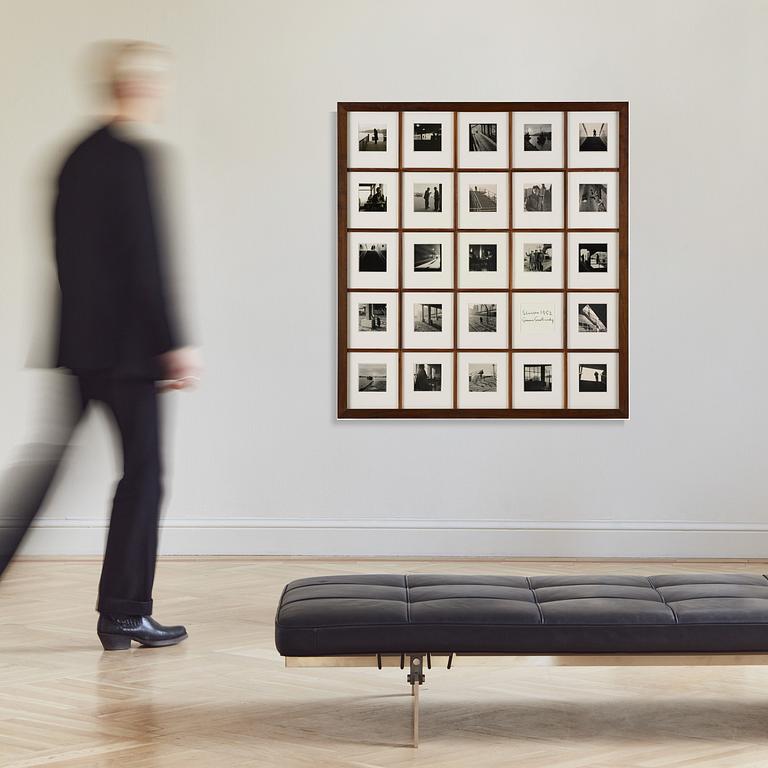Gunnar Smoliansky
"Slussen", 1952
24 gelatin silver prints from the series "Slussen". Signed Gunnar Smoliansky verso. Printed by the photographer. Image, 11.5 x 12 cm each. Including frame 138.3 x 127 cm.
Alkuperä - Provenienssi
Acquired directly from the photographer by the present owner.
Kirjallisuus
Henrik Nygren and Lars Forsberg (ed.), "Gunnar Smoliansky 1933-2019", 2021, illustrated.
Gunnar Smoliansky (e.a), "Gunnar Smoliansky - One Picture at a Time", 2008, several of them illustrated on full-page.
Muut tiedot
Gunnar Smoliansky's photographic career began in the 1950s and did not end until his death in 2019. His wanderings in the city resulted in numerous minimalist snapshots of Stockholm and its inhabitants.
Over time, many of his images have become iconic documents of their time, depicting an architecture and urban life very different from today's, even though only a few decades separate them. A good example of this is the 1952 Slussen series, which is being auctioned in its entirety for the first time. They show a functionalist building, both loved and hated, now gone forever with the much-discussed new Golden Bridge, but they also give a picture of the people who crossed Söderström. The dramatic compositions, with great contrasts between daylight and darkness in the tiled tunnels, reveal Smoliansky's keen photographic eye. There is also a hint of admiration for Henri Cartier Bresson and André Kertesz, two world-famous photographers whose main subject was street life. Wherever Smoliansky went, he used this eye. The twenty-four photographs of Slussen were taken when the photographer was nineteen and on his way home from his job as a night watchman on Stadsgårdskajen, hence the beautiful morning light. His images create a unique iconography of the city of Stockholm.
In 1987, Carl-Johan Malmberg reflected on Smoliansky's Slussen pictures when they were exhibited at the Lido cinema in Stockholm. "Exemplary: if there is a centre in Gunnar Smoliansky's pictorial world, it is perhaps Slussen in Stockholm, with its stairs, bridges, railings, railway tracks and streets. A little girl peeing in a backyard in Söder, a tram in São Paolo, a pine forest in Hälsingland are random points on the concentric circles that radiate from there. Time is also concentric: images from the early fifties - the boys' hairstyles and hats, a basket of shavings - become strangely contemporary. There is no trace of the past between us and them. Perhaps for Gunnar Smoliansky, reality is a series of intimately connected spaces, small points of light in time".











































































































